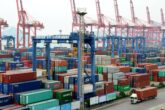March 25, 2020
Fallout from the New Oil War
On the back of Covid-19–related economic declines and a corresponding fall in demand for energy, oil markets have collapsed in recent days. This has contributed to a massive market sell-off and uncertainty about future production and trading for this core global commodity. Major oil-producing countries are reeling as this price war begins to change geopolitical risks. This brief explainer offers a roundup on the fallout.
Why did the oil market just collapse?
Saudi Arabia and Russia had a major falling out over oil supply policy at an early March meeting of the OPEC cartel and non-OPEC producers. Russia would not agree to a group cut of 1.5 million barrels of oil per day from global supply to stabilize prices. In response, Saudi Arabia opened the floodgates to expand production and exports to unprecedented levels. Russia has followed suit, and a market drowning in oil has pushed prices down toward $20 per barrel. This is the lowest price in almost two decades and it promises very difficult circumstances for higher cost, independent producers who will be squeezed from the market. This is, in part, the goal of Russia and Saudi Arabia, who have long been frustrated by the shale patch’s expanding supply role for the global market. The share price for U.S. oil producers has plummeted in this environment and consolidation in the industry is looming.
How long will this last?
There is no end to the Russia–Saudi Arabia standoff in sight, and prices could go lower, possibly much lower, as the two countries offer crude for April and May delivery at progressively lower prices per barrel. On top of that, cascading closures of businesses and cancellation of travel around the world as communities try to limit the spread of Covid-19 will continue to depress demand for oil. Even when Saudi Arabia and Russia do eventually find resolution and agree to a joint policy on holding back supply to stabilize the market, it will take time and perhaps multiple rounds of cuts by the OPEC+ producers club. Forecasters think that global energy demand could fall by up to a quarter in the second quarter of the year, which makes it extremely hard to know when economic activity will rebound and prices will climb back to the roughly $50–$70 per barrel band in which they were trading for most of the last year.
There are also politics at play in how long this standoff lasts. Russia and Saudi Arabia are on opposite sides of the civil war in Syria and Libya and do not see eye to eye on other conflicts in the region, with Saudi Arabia standing by U.S. policy against Iran. Complicating the relationship between the two countries, there is apparently a breakdown in the personal relationship between their oil ministers and disagreement among powerful elites in both countries about how to proceed on oil production.
The United States has sought to bring market stability in prior global price wars and has prioritized a relationship with Saudi Arabia partly for this reason. However, given the tense relationship the United States now has with both Russia and Saudi Arabia, it has less leverage to help broker a truce. Instead, the U.S. administration appears focused on taking advantage of the low price environment to spend several billion dollars purchasing inexpensive oil for the country’s 713 million barrel Strategic Petroleum Reserve.
Who will suffer from the new oil war?
U.S. shale producers are facing a market unlike any other since hydraulic fracturing remade the U.S. oil industry in the 2010s. Occidental Petroleum, a Houston-based oil company, had its debt downgraded to junk on the back of lower prices and its acquisition of Anadarko Petroleum. Short-cycle U.S. producers largely survived a prior price war after Saudi Arabia decided to let prices sink and defend market share in 2014. Texas is considering ordering the curtailment of oil production in the state. U.S. oil producers have reached out to OPEC to ask for a supply cut and restoration of the prices.
Many other oil-producing nations will feel economic pain from the cratering oil prices, including Iraq, Libya, Nigeria, the UAE, Brazil, among others. For Iran, at an epicenter of the Covid-19 outbreak and under sanctions, the falling oil prices threaten the trickle of hard currency it still earns from crude sales. Across these economies national leaders will struggle to meet budget requirements traditionally supported by the tax revenues that oil extraction and production bring. Over time, these mounting economic difficulties are likely to become acute for a number of states without cash on reserve and for whom borrowing may be more difficult, all of which will contribute to political strain.
Who will benefit from the new oil war?
For now, the beneficiaries of the low oil prices are those countries that will seek to fill their strategic reserves, including the United States and China. Also, consumers of energy will see lower bills. However, the constituency of those who would benefit from cheaper transport is rapidly shrinking as governments order closures and prevent travel to limit the spread of Covid-19. Still, government vehicle fleets, including first responders to coronavirus victims, may save some on fuel costs. Additionally, retail delivery vehicles, including trucks replenishing supermarkets or delivering online orders, can purchase fuel at a discount, which will limit disruption of supply chains.
How will this episode influence the long-term trend toward decarbonization and more rigorous climate change policies?
The long-term impact will probably be muted. Decarbonization is a factor of long-term demand for energy, and the relative mix of fossil fuels in energy generation. According to reliable estimates prior to the coronavirus outbreak, it would still be some decades until fossil fuels saw an appreciable decline, absent more aggressive policy posture.
One of the main challenges to more aggressive climate change policy has been the lack of international coordination in general. The United States–China relationship has only deteriorated, and the response of other powers to the coronavirus has been to put up more barriers rather than fewer. As a result, it will take additional effort to return to the status quo on climate negotiations prior to the outbreak.
At a firm level, a marginal number of businesses may decide to cut their own greenhouse gas emissions as a result of the crisis, by curtailing overseas travel or allowing more employees to work from home permanently. However, not all firms will make those decisions. As happened during the period after 9/11, as well as after the 2008 global financial crisis, many of these business operations will return to normal.
More from CNAS
-
Game Over?
The trade wargame suggests that sustained high tariffs could create leverage and urgency to spur action toward a productive restructuring of the international trade system....
By Emily Kilcrease & Geoffrey Gertz
-
Middle East Security / Energy, Economics & Security
Trump Inks $600 Bn Deal In Saudi Arabia | Musk, Blackrock CEO Flank Trump In Gulf VisitIn today's episode of India Global, U.S. President Donald Trump secured a $600 billion commitment from Saudi Arabia on Tuesday to invest in the United States. NDTV's Gaurie Dw...
By Daniel Silverberg
-
Energy, Economics & Security / Technology & National Security
Tariffs and Tech: An Uncertain RecipeHigher tariffs could prompt American cloud companies to shift more of their capital investments abroad....
By Pablo Chavez
-
Trump Tariffs: How Will U.S. Plans Reshape the Global Economy?
Donald Trump says he's already decided the tariffs he will impose on countries that export goods to America, including the United Kingdom. Channel 4 hears from Emily Kilcrease...
By Emily Kilcrease




